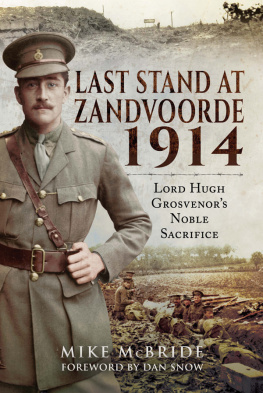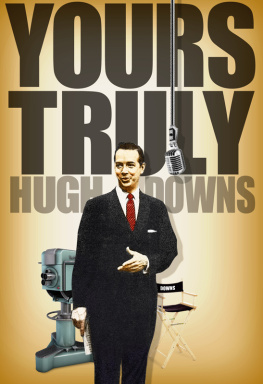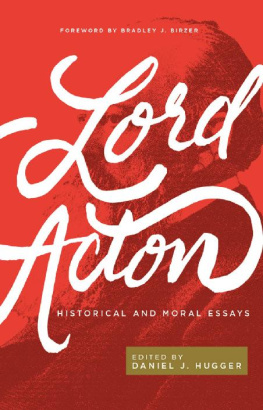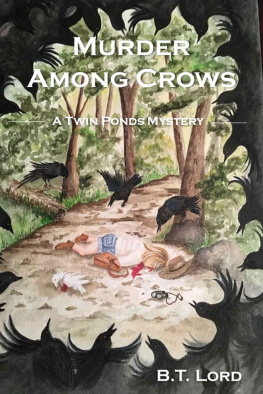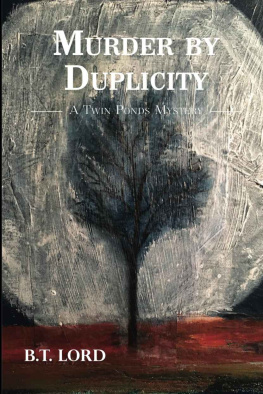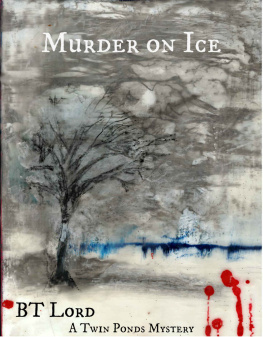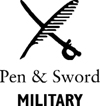
Last Stand at Zandvoorde 1914
Dedicated to:
Major General Gerald Cavendish Grosvenor
6th Duke of Westminster
KG CB CVO OBE TD CD DL
Grandson of Captain Lord Hugh William Grosvenor
Last Stand at Zandvoorde 1914
Lord Hugh Grosvenors Noble Sacrifice
Mike McBride
First published in Great Britain in 2016 by
Pen & Sword Military
an imprint of
Pen & Sword Books Ltd
47 Church Street
Barnsley
South Yorkshire
S70 2AS
Copyright Mike McBride 2016
ISBN 978 1 47389 157 9
eISBN 978 147389 159 3
Mobi ISBN 978 147389 158 6
The right of Mike McBride to be identified as the Author of this Work has been asserted by him in accordance with the Copyright, Designs and Patents Act 1988.
A CIP catalogue record for this book is available from the British Library
All rights reserved. No part of this book may be reproduced or transmitted in any form or by any means, electronic or mechanical including photocopying, recording or by any information storage and retrieval system, without permission from the Publisher in writing.
Pen & Sword Books Ltd incorporates the imprints of Pen & Sword Archaeology, Atlas, Aviation, Battleground, Discovery, Family History, History, Maritime, Military, Naval, Politics, Railways, Select, Transport, True Crime, and Fiction, Frontline Books, Leo Cooper, Praetorian Press, Seaforth Publishing and Wharncliffe.
For a complete list of Pen & Sword titles please contact
PEN & SWORD BOOKS LIMITED
47 Church Street, Barnsley, South Yorkshire, S70 2AS, England
E-mail:
Website: www.pen-and-sword.co.uk
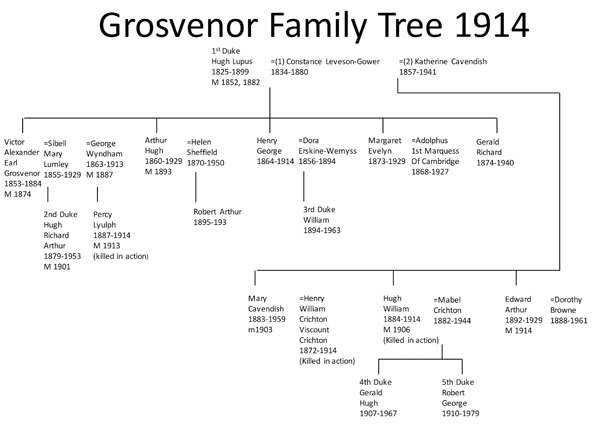
This abbreviated family tree shows a selection of the relatives of the 1st Duke of Westminster connected with the telling of Last Stand at Zandvoorde
Prologue
Zandvoorde, Ypres, Belgium, October 1914 The situation could hardly have been any worse. Battle-weary British soldiers were holding onto the frontline by their fingertips. The muddy ridge they were clinging on to just outside Ypres was vital. If the German Army could smash their way through the remnants of the British line they could march on to the Channel ports and knock Britain out of the War. Manning a section of the forward most trenches to thwart the enemy were about a hundred men of the Household Cavalry led by Captain Lord Hugh William Grosvenor.
The Official History described the predicament:
The line that stood between the British Empire and ruin was composed of tired haggard and unshaven men, many in uniforms that were little more than rags.
When the Germans attacked Lord Hugh and his Squadron disappeared.
Not one officer or man, not a button or a rifle, nothing of that Squadron has ever been seen or heard of to this day. No graves were ever discovered. No capture was ever reported. It was as though they had never been.
Preface
Nearly a million British and Empire soldiers fought and died in the First World War. Why then should attention be focused on just one man Captain Lord Hugh William Grosvenor?
During the three short weeks in which Lord Hugh fought in the Belgian region of Flanders he was a witness to massive changes in warfare such as the practical destruction of the best of Britains regular army, the British Expeditionary Force or BEF. He also saw the end of centuries of massed cavalry operations and the chivalric era that stretched back to armoured knights on horseback.
Additionally, Lord Hugh was to experience advances in military hardware such as the aeroplane, the armoured fighting vehicle, the machine-gun and, tragically, the devastating effect of modern artillery.
The British Army which eventually won victory in 1918 was fundamentally different in training, organization, equipment and tactics from the army Lord Hugh knew. The enhancements in military science were won through the hard lessons of combat experience. The eventual allied success was built on the sacrifices of Lord Hugh and his comrades.
A century after Lord Hughs death his experience provides a valuable insight into the First World War and a gateway for a new generation to understand the harsh reality of war.
Through official records, eye witness accounts and, especially, previously unpublished letters home from Lord Hugh one can get some appreciation of the chaotic and desperate actions at a critical phase of the First World War.
Above all Lord Hughs noble sacrifice is worth telling as an exemplar of stoicism, tenacity and bravery a steadfast British officer born in the late Victorian era. The action at Zandvoorde was to become a watchword for selflessness and resolve in the face of overwhelming odds.
Researching the defence of Zandvoorde is challenging due to a lack of reliable sources of information. More than one hundred British soldiers were killed defending Zandvoorde. Some British soldiers on the periphery of the battle witnessed part of the action. A few of the soldiers in the doomed trenches were rendered unconscious, captured and their later accounts are less than sketchy. There were some who were wounded, or whose ammunition was spent, and were ordered to the rear before the final assault came. However there were witnesses to what happened at the end the Germans but they are all now dead and, by a quirk of fate, their units war records were destroyed in the Second World War.
If there were few eye witnesses to the action at Zandvoorde is there any other evidence to shed light on what happened? There are two types of physical evidence the trenches and the mortal remains of the fallen.
The Zandvoorde trenches were miserable muddy pits in an area which was heavily shelled for years during the war. The area has been restored to a working village in a farming area. It is therefore difficult to locate exactly where the trench line was.
What about the fallen? Only one body was known to be recovered from the trenches. The whereabouts of the others are unknown, or officially missing presumed dead or more prosaically, known unto God.
This book is a compilation of accounts from numerous published sources and hitherto unpublished letters from Lord Hugh and others. Inevitably there is considerable overlap in the stories told by the witnesses. The exact detail of precisely what happened at Zandvoorde will never be known. This book attempts to tell the story of those who died on that muddy ridge.
Acknowledgements
I am indebted to the Grosvenor Family for allowing me access to their archives and to numerous staff members of the Grosvenor Estate who have given their encouragement and support, especially Louise Turner and Alex Hodge.
I am most grateful for the support of John Lloyd and the Household Cavalry Museum for allowing me to reproduce images from the Christina Broom collection and to Major Brian Rogers of the Life Guards.
This book would not have been possible without the assistance of David Parkland (maps), Wayne Evans and Taff Gillingham (photographs), Charles Duthie (research material), Steve Binks (military historian) and Paul Bessemer (Lord Worsleys biographer).
I was greatly encouraged by the support from Dan Snow who graciously provided a foreword.
Foreword by Dan Snow
The terrible fighting in the autumn of 1914 is often overlooked. Lots of us seem to jump from the Retreat to the Marne and the Miracle of September to the bloody summer of 1916. The shock of the Battle of the Aisne when the British and French were cut to pieces, pinned down by immoveable Germans dug in on high ground, has been forgotten. It was there that men realised that this war would be one of trenches and sieges. We have also forgotten the vicious battles fought as autumn turned to winter on the low lying, wet coast of Belgium. Britain had entered the war to protect Belgium and now young British soldiers were hurled into makeshift defensive positions to stop the German juggernaut from conquering the whole of the country.

